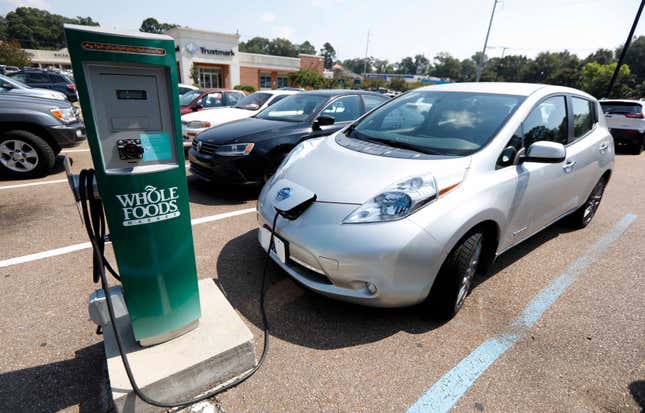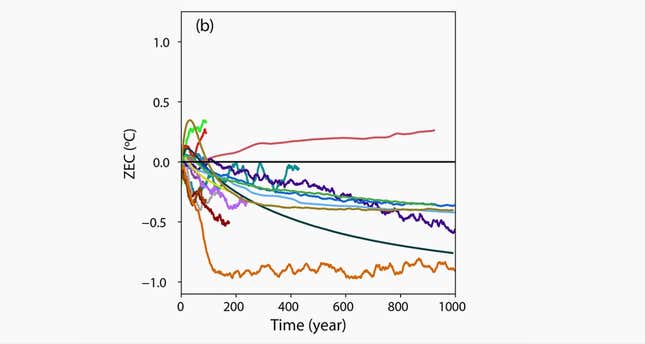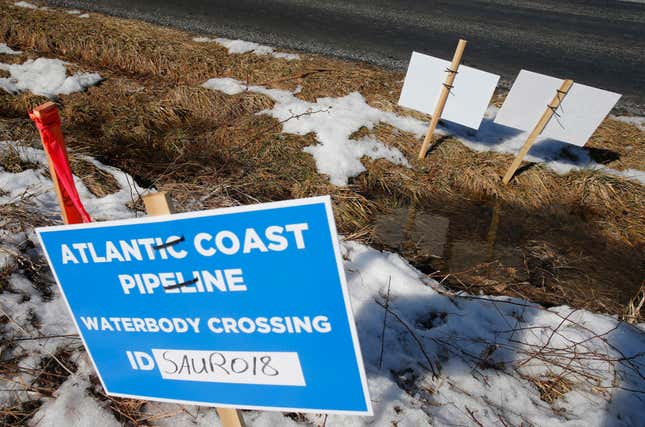The effects of Covid-19 on the fossil fuel industry now appear to be accelerating the energy transition. Shale oil bankruptcies, asset write-offs, and meager investment in future production are a few of the signs. But more will be required: CO2 emissions are now almost back to normal. Here’s what happened over the past week that helped or harmed the world’s chances of cutting greenhouse-gas emissions to zero.

Decreases emissions
1️⃣ The number of public charging points for electric vehicles jumped by 60% in 2019. The International Energy Agency says 89% of the world’s 7.3 million charging points are still private slow-chargers at homes and businesses.
2️⃣ Investment in new oil and gas infrastructure has sunk to its lowest levels in 15 years. Production is now forecast to stall for the rest of the decade.
3️⃣ Dense native mini-forests planted along roadsides and schoolyards can grow 10 times faster than conventional forests while offering wildlife and climate benefits. Time will tell if they deliver long-term carbon sequestration.
4️⃣ Tesla won approval to become a utility in the UK, allowing it sell solar power as it does in the US. The company also won the right to sell and service its electric cars in Michigan, despite political opposition in American automakers’ home state.
5️⃣ BP wrote off $17.6 billion (£14 billion) in oil and gas assets, acknowledging low oil prices after Covid-19 may be a new normal: “We have reset our price outlook to reflect that impact and the likelihood of greater efforts to ‘build back better’ towards a Paris-consistent world,” said CEO Bernard Looney.
“Close to zero”
To limit global warming to 1.5°C, scientists say countries need to eliminate net emissions by about 2050. What would happen next? Researchers in the journal Biogeosciences ran 18 model simulations to test how the world’s oceans and terrestrial ecosystems would respond when (if?) emissions ceased. The most likely outcome, the researchers found, was that additional warming would effectively end as well (a 0.36°C decrease or 0.29°C increase were most likely). That’s encouraging, but not all models agreed. Some suggested decades or even millennia of warming were still possible. If so, the remaining carbon budget to avoid catastrophic warming may be too optimistic.

Net-zero (for now)
1️⃣ Global manufacturer Unilever will label 70,000 of its products with the carbon emissions they take to produce and deliver. The company aims to eliminate net emissions from all products by 2039 as part of its €1 billion Climate & Nature Fund.
2️⃣ America’s Nuclear Regulatory Commission says it is considering an operating license for a new nuclear micro-reactor. Oklo Power’s Aurora reactor, designed for small remote applications, will run on reprocessed nuclear waste.
3️⃣ Natural gas exports, hailed as “molecules of US freedom” by the US Department of Energy, have fallen at American ports. The global oversupply means it’s cheaper in Europe and Asia to buy domestic gas rather than ship it from the US.
4️⃣ India’s Adani Green Energy Limited says it will invest $6 billion in 8 gigawatts of new solar capacity, much of it manufactured domestically. That reduces the country’s reliance on imported Chinese solar equipment.
5️⃣ New cargo ships are burning cleaner fuel, but older vessels still in rotation will be responsible for most of the shipping sector’s CO2 emissions. They must be retrofitted and decarbonized as soon as possible, according to a new study.
✦ Climate careers ✦
The coronavirus pandemic threatens to permanently ground the fledgling careers of young scientists from around the world, including those engineering the next set of energy innovations. “It’s like compound interest,” says Heidi Elmendorf, biologist at Georgetown University and director of its regents STEM scholars program. “The lack of investment now may have ramifications for a career.” Thousands of scientists-in-training have seen their data collection, lab analyses, and funding opportunities disrupted. Without help, many young scientists run the risk of falling out of the pipeline. To read more, including Quartz’s full field guide on science’s great pandemic pivot, try out a subscription today with a seven-day free trial.

🔼 Increases emissions
1️⃣ Last month, global temperatures tied 2016 for the hottest May on record. Average global temperatures rose to 60.3°F (15.7°C), the highest since records started 141 years ago.
2️⃣ The US Supreme Court upheld a federal permit for an $8 billion natural gas pipeline under the Appalachian Trail designed to deliver gas to Virginia and North Carolina.
3️⃣ Japan’s renewables drive after its 2011 nuclear disaster is not panning out. The proportion of renewable electricity generation in the country rose from 10% to 17% between 2010 and 2018, yet nearly two dozen new coal plants are planned.
4️⃣ Global emissions fell 17% in early April compared to the prior year. But now, they’re almost back at their pre-Covid-19 levels, according to a paper originally published in Nature Climate Change.
5️⃣ Flaring—the practice of burning unwanted natural gas at oil wells—incinerated a record $750 million in Texas in 2018, according to the Institute for Energy Economics and Financial Analysis.
Stats to remember
As of Jun. 14, the concentration of carbon dioxide in the atmosphere was 416.81 ppm. A year ago, the level was 414.33 ppm.
Have a great week ahead. Please send feedback and tips to mjc@qz.com.